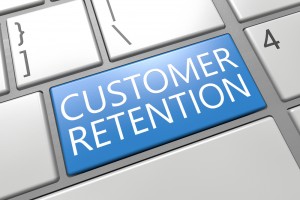The foundation of a customer-centric culture is a structured, measurable customer experience management (CEM) strategy. Companies can support and enhancing those strategies with enabling technologies. There are 12 types of technology that can play a key role is managing, interpreting, and improving various aspects of the customer experience.
Work Force Optimization
We all know it takes engaged employees to deliver consistently superior customer experiences. Take the omni-channel approach to employee-customer engagement by tapping into phone, email, online chat, social media and other methods of direct customer interaction. Based on the appeal of video games, mobile apps and streaming content, gamification has also proven to be effective in engaging employees for greater performance. The key is to balance the needs of agents and customers to optimize productivity and CX.
Field Service Management
Although an increasing amount of customer service is done remotely and/or online, there is still a considerable amount of direct customer service performed in the field, either at customer locations or a company’s own field service centers. Starting with initial contact with the customer, where field service incidents are created, it’s important to provide tools to both support the resolution and to allow customers to stay informed/provide feedback and ultimately be satisfied with the outcome.
Help Desk Management
Help desks generally are internal operations that assist employees and business partners to manage their various IT assets. Start by hiring and training good employees who are inspired to provide exceptional support. Have a well-defined Service Level Agreement (SLA) in order to provide optimal, first-level support service to all departments. Make it a priority to develop a helpful culture where issues are tracked end-to-end and nothing slips through the cracks.
Knowledge Management—Self-Service—Remote Support
These three CX technologies are inter-related. Knowledge Management (KM) sets the framework and strategy for an organization’s culture and processes that management uses to install enabling KM technology that fits with its corporate politics. Self-service portals offer authorized users an omni-channel approach to getting the information they want to solve their questions and operational issues. And of course, remote service and support typically are functions of KM and self-service.
EFM—Business Intelligence—CX Certification
These three CX technologies are also inter-related. EFM systems handle customer data collection and analysis based on that data. Business intelligence tools dig deeper to perform more advanced discovery, apply predictive analysis to help define future customer behavior and/or business impacts, and provide extensive enterprise reporting. CX certification training is gaining more importance as organizations recognize the need to be certified in the principles and tactics of effective CX training to best leverage the EFM and BI outcomes.
Big Data—Text Analytics—Speech Analytics
Clearly these CX technologies are joined at the hip. Big data is a way of aggregating and examining the huge amount of CX/CEM data collected to uncover both obvious and obscure patterns and inter-relationships. With text mining and analytics technology, you can analyze text data from the web, social media, comment fields, books and other text-based sources to uncover insights you hadn’t noticed before. Speech analytics has a similar intent as text analytics, but it works with unstructured spoken words to determine frequency of comments and sentiment to measure positive, neutral and negative remarks.
Sales Force Automation
SFA was the application that essentially launched CRM decades ago. The idea is to build a database of every meaningful detail about customer purchases, demographics, and needs and wants so the organization can pinpoint what products and services a given customer may purchase in the future. SFA addresses the various tactical functions that affect CX execution.
Marketing—Social Media Automation
A natural extension of CRM and SFA, marketing and social media automation incorporates everything you need to know about your leads and customers in one place. Since social media channels have such an impact on marketing and customer relationships, it just makes sense to consider them together.
Innovative Inscription—Omni-channel—Intelligent Visual Communications
Customers expect omni-channel experiences through multi-channel engagement with vendors and suppliers. This is part of the evolution in customer buying behavior that has changed the landscape of traditional customer engagement. Understanding which customer experiences and touchpoints are driving the best results can be a challenge. Omni-channel platforms capture the importance of using multi-channel marketing to effectively reach, engage and convert your customers. Trial and error is typically a necessary approach to finding the right channel mix for each type of customer.
Online Community Forum Management
Online communities exist everywhere today, from general purpose channels like Facebook, Twitter and LinkedIn to specialized communities we all know, such as CustomerThink, CCNG and CRMxhange. But managing these forums effectively is a matter of governance.
- Agree on your forum governance model. How involved do you want to be in managing your forum?
- Agree on intervention protocols. What kind of comments, questions and issues are going to prompt a facilitator intervention?
- Determine intervention procedures. What are your approval processes for releasing intervention content?
- Determine intervention responsibilities. Who is your primary facilitator/site manager?
- Ensure proper training for facilitator/site manager. Can someone with extensive customer service experience handle the site? Do they need specialist media training?
- Ensure community members know rules of engagement. Make sure the moderation rules are appropriate for your forum.
Professional Services Automation
Most organizations either have their own professional services team, use resources from a vendor/supplier, or bring in a specialized third party. Examples of PSA applications:
-
- MSP/IT Services: Control IT Business
- System Integrators: Provide Comprehensive Support
- Software Companies: Gain Visibility Between Development and Support
- Cloud Services: Manage, Monitor and Bill
- Point of Sale Resellers (POS): Evolve to Retail IT
IVR/ACD Automation
We’re all familiar with these systems. They’re the anchors of contact center operations and some of the oldest examples of CRM technology. Interactive Voice Response (IVR) allows a computer to interact with humans using voice commands or tones from a telephone keypad. Technically, IVR lets the caller enter an “ID” or account code, then provides access to a database. This is where the “interactive” part comes in. For example, bank credit unions often have “phone bank” systems that allow you to conduct transactions. Automatic Call Distribution (ACD) systems answer incoming calls and allow the caller to choose a menu, group of extensions or singular extension to which the call is routed. Contact centers use ACDs to organize incoming calls into queues of callers waiting to speak with an operator or service person.
CX Technologies is one of 12 elements that comprise the CEMDNA Playbook Strategy.






